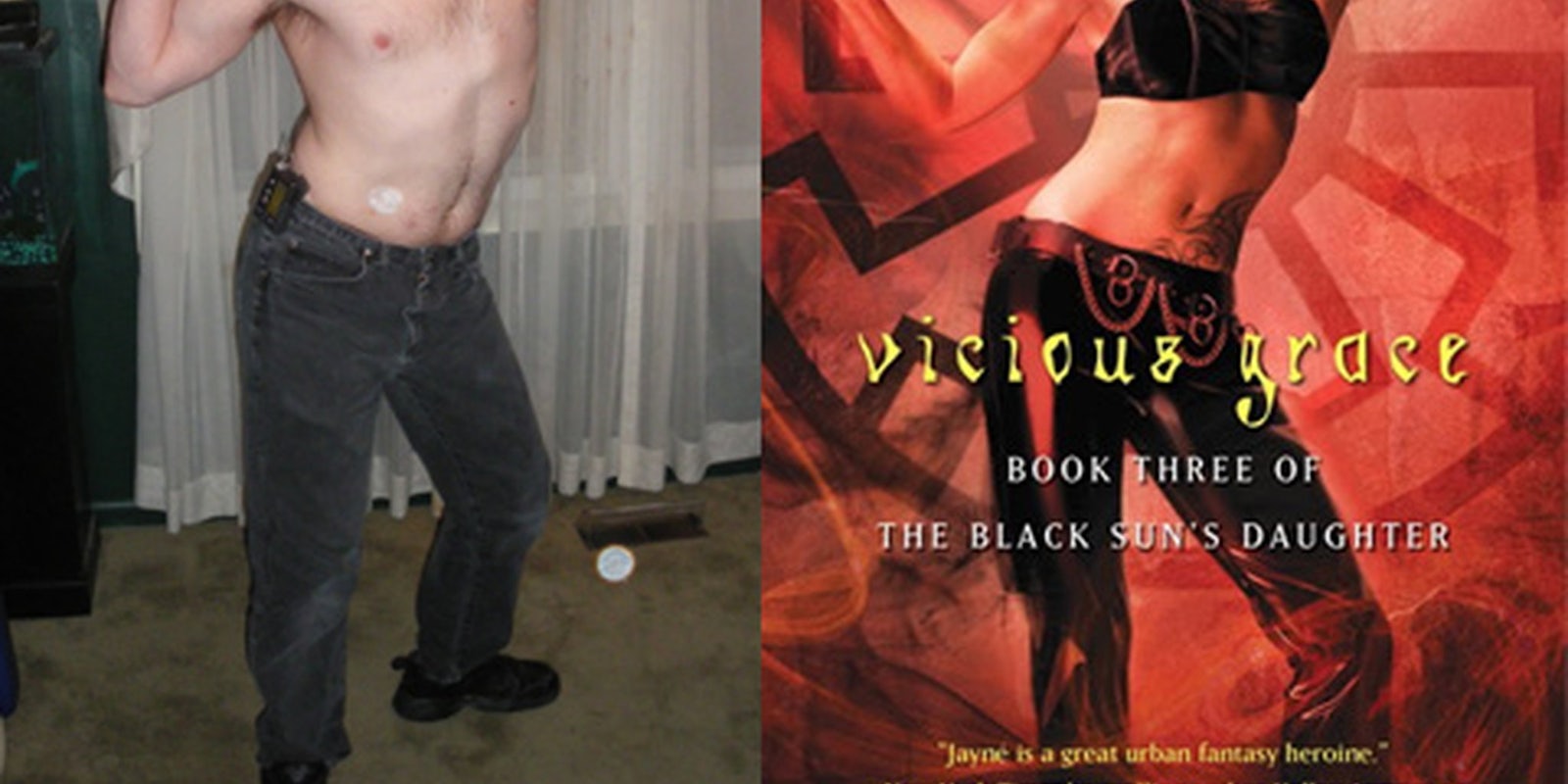Look at the illustrations for almost any fantasy, science fiction, or comic book, and you’ll see heroic male characters with a variety of supernatural powers ranging from “vampire stuff” to those “capable of leaping tall buildings in a single bound”—plus everything in between.
Now look at the heroic female characters. They also have magnificent powers and include being “capable of running in seven-inch stripper heels without twisting an ankle” and “executing complex martial-arts ninja moves without their strapless bustiers slipping off their enormous anti-gravity breasts.”
Fantasy novelist Jim Hines has long been bemused by the implausibly sexy women gracing his books’ covers, and when he discussed this on his blog this week he obeyed the creative writing mantra “Show, don’t tell.”
Now I could talk about the way women are posed in cover art … or I could show you. I opted for the latter, in part because it helped me to understand it better. I expected posing like [the cover model on his latest book] to feel a little weird and unnatural. I did not expect immediate, physical pain from trying (rather unsuccessfully) to do the hip thing she’s got going on.”
After reproducing his own character’s pose, Hines modeled poses from other authors’ fantasy-novel covers and wrote captions for each one. For a shot of himself staring back over his shoulder while fixing the camera lens (and the reader) with a sultry stare, he wrote, “MY BUTT! Let me show you it!”
Hines’ criticism of sexy cover models should not be confused with criticism of sexiness in general. He later noted, “There’s nothing wrong with being sexual. … But posing like these characters drives home exactly what’s being emphasized and what’s not. My sense is that most of these covers are supposed to convey strong, sexy heroines, but these are not poses that suggest strength. You can’t fight from these stances. I could barely even walk.”
Commenter Anita K. pointed out that part of Hines’ difficulty stemmed from anatomical differences. If he had a woman’s hips, he could hold certain poses more easily, she argued.
Still, she agreed with Hines’ main point: “yeah, most of those poses just don’t convey anything LIKE ‘strong and sexy,’ but more like ;I’m going to die in a minute here because I’m showing off instead of paying attention to my surroundings or WEARING PROPER ATTIRE TO BE FIGHTING IN’ …. If they’re going around with a gun why are they not wearing a SHIRT or even a properly supportive garment for their ‘tracts of land’? If they’re prepared for a fight why did they not tie back their hair?”
Hines is far from the first critic to stage recreations of their implausibly sexy poses. He ended his own post with a link to a two-week-old Tumblr post from a martial artist and contortionist who recorded his unsuccessful attempts to recreate certain comic book heroine poses, and in the comment thread another reader linked to “Men photographed in stereotypical pin-up poses,” arched backs, pointed feet and all.
Still, for all the gratuitous sexiness Hines and his readers criticized, at least fantasy-cover models and pin-up girls are based on actual women with actual human limitations. By contrast, comic-book artists have long been notorious for drawing sexy women in poses that aren’t merely unrealistic, but biologically impossible.
Last September, comic artist J. Scott Campbell incurred the mockery of 4chan after gracing the cover of Amazing Spiderman with girlfriend Mary Jane Watson posing as though she had rubberized bones connected by 360-degree joints.
None of the 4channers who photographed themselves enjoy that quality, but they could offer the artist some advice: “Pro tip for comic book artists: No human being alive sits like that as a way of relaxing. This is beyond ridiculous.”


